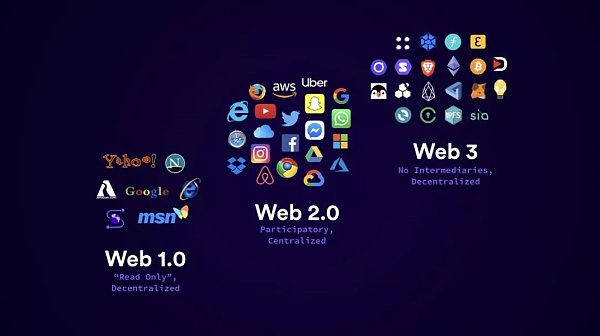Will the wheel turn again? Uh … nope. Not for awhile. Read on.
On January 9, 2007 Steve Jobs introduced the original iPhone at MacWorld 2007
10 January 2022 (Paris, France) – Life moves pretty fast. 15 years ago the world met iPhone for the first time and in a moment everything changed. The biggest players in 2007 were Nokia, Blackberry, Motorola, SonyEricsson. In a few years, Nokia was sold to Microsoft and Motorola to Google, Blackberry went bankrupt, the SonyEricsson partnership ended. No phone before iPhone had its form factor. But after the iPhone every phone did. Yes, many more big moments in tech will come, but not just yet.
Sascha Segan writes about the power shift the world is still reeling from in a piece entitled 15 Years Ago, the iPhone Created Big Tech. A few clips:
In a lot of ways, that iPhone release helped herald in our current era of “Big Tech,” where a few huge platform companies control so much of our software and services. Lots of other factors made it happen, to be sure, but Apple did a few key things to push our tech world into its current centralized state.
Back before the iPhone, carriers dictated a lot of the software preloaded on phones. A lot of that software sucked! But there were also a lot of carriers, which meant a lot of diversity and decentralization.
From 2007, I can think of AT&T, Cingular, T-Mobile, Verizon; Sprint and Nextel with the same ownership but different networks; MetroPCS and Cricket, both then independent companies; US Cellular, Alltel, and Dobson Cellular One. That whole list except the Big Three [AT&T, Sprint, Verizon] is now gone.
Apple broke the carrier control over software—in consumer’s favor!—by loading its own Google and Yahoo! relationships onto that first phone. Big Tech now dealt with Big Tech. And as the iPhone’s influence spread, especially after it became available on all US carriers in 2011, Apple’s sole power to make those deals grew.
…We’re very much now living in a world the iPhone made—a world of user-friendly, strictly controlled platforms in the grip of a small number of private companies.
And honestly, I don’t see how that changes. The current froth over “web3” and distributed organizations misses what made the iPhone great: simplicity and ease. Given a complex, difficult system like the new blockchain-based systems versus Apple’s simple user interfaces, policies, and guidance, consumers will almost certainly pick ease of use.
When the first iPhone came out, I saw it as a revolution. Revolutions, history tells us, often resolve into monarchies. Will the wheel turn again?
The answer, as you’ll see in the next link, feels like “nope, not just yet”.

Moxie Marlinspike is a very skilled cryptographer who I have quoted numerous time in previous posts. He works on the end-to-end encrypted app Signal, and he decided to really find out what the “web3” fuss is about. A few clips:
One thing that has always felt strange to me about the cryptocurrency world is the lack of attention to the client/server interface. When people talk about blockchains, they talk about distributed trust, leaderless consensus, and all the mechanics of how that works, but often gloss over the reality that clients ultimately can’t participate in those mechanics. All the network diagrams are of servers, the trust model is between servers, everything is about servers. Blockchains are designed to be a network of peers, but not designed such that it’s really possible for your mobile device or your browser to be one of those peers.
With the shift to mobile, we now live firmly in a world of clients and servers – with the former completely unable to act as the latter – and those questions seem more important to me than ever. Meanwhile, ethereum actually refers to servers as “clients,” so there’s not even a word for an actual untrusted client/server interface that will have to exist somewhere, and no acknowledgement that if successful there will ultimately be billions (!) more clients than servers.
For example, whether it’s running on mobile or the web, a dApp like Autonomous Art or First Derivative needs to interact with the blockchain somehow – in order to modify or render state (the collectively produced work of art, the edit history for it, the NFT derivatives, etc). That’s not really possible to do from the client, though, since the blockchain can’t live on your mobile device (or in your desktop browser realistically). So the only alternative is to interact with the blockchain via a node that’s running remotely on a server somewhere.
The point being that the “decentralised” has in fact to rely on very centralized servers. Marlinspike’s elegant post shows that web3 will inevitably become centralised (and in fact already is, very heavily) and also that it’s a complete mess. His blogpost is sure to be the touchstone for the rest of the year on this topic.

Oh, there is a boatload of complaints one can lodge against Tim Cook. Apple has struck multi-billion dollar Faustian bargains with China for its own market interests; lobbied the U.S. government to evade potential liability for its use of forced labor in China; promoted “The Gold Standard in Mobile Privacy” which is no such thing and is actually worse for data privacy, etc. etc.
But, hey. This is business. This is “Big Tech”. It’s all about, only about the money.
Over the weekend, Patrick McGee’s “Big Read” for the Financial Times was entitled “Apple at $3tn: the enigma of Tim Cook”. Basically he points out that while Steve Jobs is considered a visionary leader, his successor has presided over an astonishing record in value creation. McGee’s analysis here is spot on, the point being that it’s “Services” and not “Product” that gives the Apple ship crucial stability. I wrote the same thing about two years ago … but, alas, I do not have the cache of Patrick McGee.
The article is behind the Financial Times pay wall so I have taken the liberty of sticking it up on my SlideShare. Here are a few clips:
Apple’s ascendancy during the “second coming” of [Steve] Jobs from 1997 to 2011 had set the paradigm for Apple as a disruptive innovator that could upend entire industries with single products. The launches of the iMac, iPod, iPhone and iPad became the stuff of movies. But Cook, who earned nearly $100m last year thanks largely to stock awards, does not fit this model. His skills lie in areas that popular culture doesn’t really comprehend, let alone appreciate.
“Steve was a visionary firebrand, and Tim is an efficiency expert, an operational guru,” says Ray Wang, chair of Silicon Valley-based Constellation Research.
“You need both in a company,” he adds. “You need a person that comes up with the great idea that gets people excited . . . and you need the person who puts it in the market at massive scale.”
Cook’s supporters insist he has fundamentally changed the nature of the company. During his time at the helm, Apple’s annual revenues have ballooned from $108bn in the year he took over to $365bn in 2021. Net profits have grown 3.7 times, from $26bn to $95bn.
But more significant is how Cook has built a services juggernaut to eke out every penny of the Apple ecosystem, garnering a steady stream of recurring revenues from App Store fees and nearly 800m customers paying for digital media that expanded during his tenure. That substantially reduced Apple’s dependence on the iPhone — and propelled the company’s share price to a level where its price-to-earnings ratio is now three times higher than what it was a decade ago.
“Tim Cook’s biggest success is the cultivation and the fostering of services, and the degree to which he’s been able to revolutionise the way that the company is perceived in the eyes of investors,” says [WSJ journalist Tripp] Mickle.
Mickle (an ex-Wall Street Journal tech reporter) has a book on post-Jobs Apple coming out later this year and he has circulated a few bits and bops to a few of us. It will certainly be better than the dire “Haunted Empire” published in 2014 (by another ex-Wall Street Journal tech reporter) which insisted that Apple after Jobs would run into the ground.